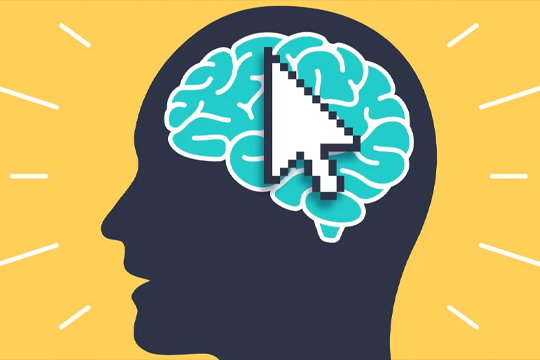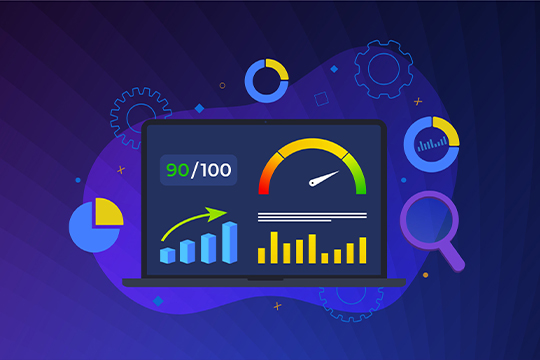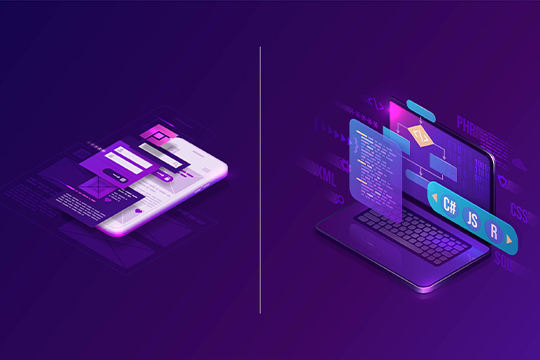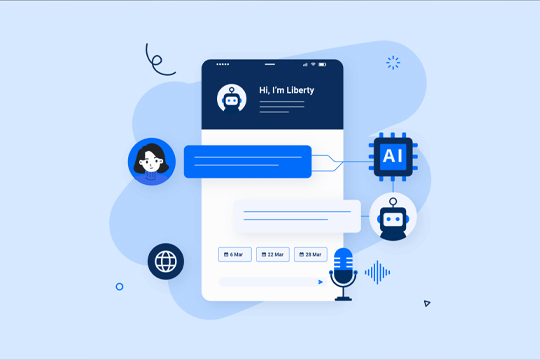Artificial Intelligence (AI) chatbots have revolutionized the way we interact with technology. By simulating human conversation, these chatbots enhance customer service, provide mental health support, assist in education, and much more. As we progress into 2024, the evolution of AI chatbots continues to break new ground, providing more sophisticated and human-like interactions.
Importance of AI Chatbots in 2024
In 2024, the importance of AI chatbots has grown exponentially. Businesses, educational institutions, healthcare providers, and even entertainment platforms leverage AI chatbots to offer round-the-clock assistance, personalized experiences, and efficient service delivery. Their integration into various sectors signifies a major shift towards a more automated and interactive digital environment.

Key AI Chatbots of 2024
Mitsuku
Background and Development
Mitsuku, developed by Steve Worswick, is a multi-award-winning chatbot known for its conversational abilities. Created using the Pandorabots platform, Mitsuku has won the Loebner Prize Turing Test multiple times, highlighting its capacity to mimic human conversation.
Key Features
- Conversational Skills: Advanced natural language processing allows Mitsuku to understand and respond to a wide range of topics.
- Personality: Mitsuku has a playful and engaging personality, making interactions enjoyable.
- Learning Ability: Continuously learns from interactions to improve responses.
- User Experience: Users praise Mitsuku for its ability to maintain engaging and coherent conversations. Its playful nature and extensive knowledge base make it a popular choice for casual chat and entertainment.
Replika
Background and Development
Replika, developed by Luka, Inc., is designed to be a personal AI companion. Founded by Eugenia Kuyda, Replika aims to offer emotional support and friendship, learning from conversations to become more attuned to users’ needs.
Key Features
- Emotional Support: Provides empathetic and supportive conversations.
- Personalization: Tailors interactions based on user preferences and behavior.
- Growth Over Time: Evolves with continuous interactions, becoming more personalized.
User Experience
Users appreciate Replika for its emotional intelligence and supportive nature. It’s particularly popular among those seeking companionship and mental health support.
Jasper AI
Background and Development
Jasper AI, developed by OpenAI, is a sophisticated chatbot designed for various applications, including customer service and content creation. It leverages the GPT-3 architecture to provide intelligent and context-aware responses.
Key Features
- Content Generation: Capable of creating high-quality written content.
- Contextual Awareness: Understands context to provide relevant responses.
- Multi-Industry Use: Versatile across different industries and applications.
User Experience
Jasper AI is highly valued for its efficiency and versatility. Users in the content creation industry find it particularly beneficial for generating ideas and drafts quickly.
Woebot
Background and Development
Woebot, developed by Woebot Health, is a mental health chatbot designed to provide cognitive-behavioral therapy (CBT) techniques. Created by clinical psychologists, Woebot offers evidence-based support to users.
Key Features
- CBT Techniques: Uses established CBT methods to support mental health.
- Daily Check-Ins: Regularly checks in with users to track their mental health.
- Anonymity: Provides a safe, anonymous space for users to discuss their feelings.
User Experience
Woebot is praised for its effectiveness in providing mental health support. Users find it helpful for managing anxiety, depression, and stress.

BlenderBot
Background and Development
BlenderBot, developed by Facebook AI, is designed to have engaging and contextually aware conversations. It combines various conversational AI models to enhance its interaction capabilities.
Key Features
- Contextual Understanding: Maintains context over long conversations.
- Knowledge Integration: Incorporates a wide range of knowledge sources.
- Interactive Conversations: Designed to be engaging and informative.
User Experience
BlenderBot is well-regarded for its ability to maintain context and provide informative responses. Users find it useful for both casual conversation and information retrieval.
Xiaoice
Background and Development
Xiaoice, developed by Microsoft, is an AI chatbot known for its emotional intelligence and conversational abilities. Initially launched in China, Xiaoice has become one of the most advanced AI companions globally.
Key Features
- Emotional Intelligence: Responds with empathy and understanding.
- Multi-Platform Presence: Available across various platforms, including social media.
- Creative Abilities: Can compose poems, stories, and even create artworks.
User Experience
Users love Xiaoice for its emotional depth and creative interactions. It is particularly popular in China, where it has millions of active users.
AI Dungeon
Background and Development
AI Dungeon, developed by Latitude, is an interactive storytelling AI. It uses advanced natural language processing to create dynamic and immersive text-based adventures.
Key Features
- Dynamic Storytelling: Generates unique and engaging stories based on user input.
- Wide Range of Scenarios: Offers various genres and settings for storytelling.
- Interactive Gameplay: Allows users to influence the direction of the story.
User Experience
AI Dungeon is highly appreciated by gamers and storytellers for its creativity and flexibility. It offers endless possibilities for interactive fiction.
Pandorabots
Background and Development
Pandorabots, a platform developed by Pandorabots, Inc., allows developers to create and deploy AI chatbots. It supports AIML (Artificial Intelligence Markup Language) and is used to power various conversational agents.
Key Features
- Customization: Highly customizable platform for creating unique chatbots.
- Scalability: Supports large-scale deployments across different industries.
- Integration: Easily integrates with various platforms and applications.
User Experience
Developers and businesses value Pandorabots for its flexibility and ease of use. It is widely used for creating customer service bots and interactive conversational agents.
TARS
Background and Development
TARS, developed by Tars Technologies, is a chatbot platform focused on creating conversational landing pages and enhancing customer engagement. It is designed to improve lead generation and customer support.
Key Features
- Conversational Landing Pages: Transforms static pages into interactive experiences.
- Lead Generation: Optimizes the lead capture process through engaging conversations.
- Analytics: Provides detailed insights into user interactions and performance.
User Experience
Businesses find TARS effective for improving customer engagement and conversion rates. It is particularly useful for marketing and customer support applications.
ManyChat
Background and Development
ManyChat, developed by ManyChat Inc., is a leading chatbot platform for Facebook Messenger and Instagram. It helps businesses automate conversations and marketing efforts on social media.
Key Features
- Social Media Integration: Seamlessly integrates with Facebook Messenger and Instagram.
- Marketing Automation: Automates marketing campaigns and customer interactions.
- User-Friendly Interface: Easy to use with drag-and-drop functionality.
User Experience
ManyChat is highly regarded for its ease of use and effectiveness in social media marketing. Businesses use it to automate customer service and engage with their audience.

Applications of AI Chatbots
AI chatbots are extensively used in customer service to provide instant responses, resolve common queries, and handle customer issues efficiently. They enhance customer satisfaction by being available 24/7 and reducing wait times.
Chatbots like Woebot and Replika offer valuable mental health support by providing therapy techniques, empathetic conversations, and regular check-ins. They help users manage stress, anxiety, and depression effectively.
Technological innovations have become critical in strengthening patient care
In the education sector, AI chatbots assist students by answering questions, providing study resources, and offering personalized learning experiences. They support teachers by automating administrative tasks and facilitating interactive learning.
AI chatbots like AI Dungeon create dynamic gaming experiences by generating interactive stories and adventures. They enhance user engagement by providing endless possibilities for gameplay and storytelling.
AI chatbots serve as personal assistants, helping users manage their schedules, set reminders, and perform various tasks. They improve productivity by automating routine activities and providing timely assistance.
Benefits of AI Chatbots
AI chatbots operate round the clock, providing users with assistance at any time of day. This continuous availability improves customer service and ensures that users always have access to support.
Implementing AI chatbots reduces operational costs by automating repetitive tasks and minimizing the need for human intervention. Businesses can save on labor costs while maintaining high service standards.
AI chatbots offer personalized interactions by learning from user behavior and preferences. They tailor responses and recommendations to individual users, enhancing the overall experience.
Chatbots process and respond to queries quickly, reducing wait times and improving service efficiency. Their ability to handle multiple interactions simultaneously ensures prompt and effective service delivery.
AI chatbots can easily scale to accommodate growing user bases and increasing interaction volumes. They provide consistent performance regardless of the number of users, making them ideal for businesses of all sizes.
Challenges and Limitations
- Privacy and Security Concerns
AI chatbots often handle sensitive user data, raising concerns about privacy and security. Ensuring that data is protected and used responsibly is a critical challenge for developers and businesses.
Despite advancements, chatbots can struggle with understanding context and nuances in conversation. Misinterpretations can lead to irrelevant or incorrect responses, affecting user satisfaction.
- Dependence on Training Data
The performance of AI chatbots depends heavily on the quality and quantity of training data. Inadequate or biased data can result in poor performance and limited capabilities.
Building and maintaining user trust is essential for chatbot success. Users may be hesitant to share personal information or rely on chatbots for important tasks due to concerns about accuracy and reliability.
The development and deployment of AI chatbots raise ethical questions regarding transparency, accountability, and the potential for misuse. Addressing these considerations is crucial to ensure responsible AI use.

Comparative Analysis of AI Chatbots
Here is a comparative analysis of some of the best AI chatbots of 2024, presented in a table format.
| Feature/Aspect |
ChatGPT |
Mitsuku |
Replika |
Jasper AI |
Woebot |
BlenderBot |
| Developer |
OpenAI |
Steve Worswick |
Luka, Inc. |
OpenAI |
Woebot Health |
Facebook AI |
| Primary Use |
General-purpose AI |
Casual conversation |
Emotional support |
Content generation |
Mental health support |
Engaging conversations |
| Conversational Skills |
Excellent |
Good |
Good |
Excellent |
Good |
Excellent |
| Emotional Intelligence |
Moderate |
Moderate |
Excellent |
Moderate |
Excellent |
Good |
| Contextual Awareness |
Excellent |
Good |
Good |
Excellent |
Moderate |
Excellent |
| Customization |
High |
Low |
Moderate |
High |
Low |
High |
| Availability |
Multi-industry |
Entertainment |
Personal companionship |
Multi-industry |
Healthcare |
Multi-industry |
| Unique Features |
Versatility, Scalability |
Playful personality |
Empathetic responses |
Content creation |
CBT techniques |
Context maintenance |
| User Experience |
High |
High |
High |
High |
High |
High |
| Integration |
High |
Moderate |
Moderate |
High |
Low |
High |
| Learning Ability |
High |
Moderate |
High |
High |
Moderate |
High |
| Recognition |
Widely recognized |
Loebner Prize winner |
Popular in mental health |
Popular among creators |
Trusted in therapy |
Recognized for context |
| Cost-Effectiveness |
High |
High |
High |
High |
High |
High |
Key Insights
- ChatGPT vs. Mitsuku: ChatGPT excels in providing versatile, context-aware responses suitable for various industries, while Mitsuku is known for its playful and engaging conversational style, making it a popular choice for entertainment.
- ChatGPT vs. Replika: ChatGPT is a general-purpose AI, widely used across industries, whereas Replika focuses on providing emotional support and companionship, making it ideal for personal use and mental health applications.
- ChatGPT vs. Jasper AI: Both are based on the GPT-3 architecture and offer high-quality, context-aware interactions. Jasper AI is particularly useful for content creation and is favored by marketers and content creators.
- ChatGPT vs. Woebot: ChatGPT offers broad applications, while Woebot specializes in mental health support using cognitive-behavioral therapy techniques, providing effective emotional support to users.
- ChatGPT vs. BlenderBot: Both are designed for interactive dialogue with strong context maintenance. BlenderBot integrates multiple conversational models, enhancing its ability to provide engaging and informative conversations.
AI chatbots have become indispensable tools in various industries, offering numerous benefits such as 24/7 availability, cost-effectiveness, and personalized interactions. Despite challenges like privacy concerns and understanding context, advancements in AI technology continue to enhance chatbot capabilities and user experiences.
To stay ahead in the rapidly evolving world of AI chatbots, keep exploring new developments, innovations, and best practices. Consider how these powerful tools can benefit your business or personal projects and start integrating them today.
Ndimension Labs – Leading the Way with Advanced AI Integration
Ndimension Labs stands out in the competitive landscape of technology solutions by offering cutting-edge services that integrate advanced AI capabilities. From custom software development and mobile application creation to digital marketing and website development, Ndimension Labs leverages the power of AI to provide innovative, efficient, and effective solutions for its clients.

Personalized Customer Experiences: By incorporating AI into their services, Ndimension Labs ensures personalized interactions and recommendations, enhancing user satisfaction and engagement.
Automated and Streamlined Processes: AI-driven automation streamlines various business processes, reducing manual effort and operational costs while increasing efficiency and accuracy.
Predictive Analytics and Insights: AI tools enable Ndimension Labs to offer predictive analytics, providing valuable insights into market trends, customer behavior, and business performance. This helps clients make informed decisions and stay ahead of the competition.
Enhanced Security Measures: With AI-based security solutions, Ndimension Labs helps protect client data and transactions, ensuring robust cybersecurity measures that safeguard against threats and breaches.
24/7 Customer Support: AI chatbots and virtual assistants provide round-the-clock support, ensuring that customers receive timely assistance and problem resolution without delays.
Staying Ahead of Competitors:
Ndimension Labs is dedicated to staying at the forefront of technology by continually integrating the latest AI advancements into its service offerings. This commitment to innovation ensures that clients benefit from the most up-to-date and effective solutions available. By choosing Ndimension Labs, businesses can leverage these advanced capabilities to outperform competitors and achieve sustainable growth.
Why Ndimension Labs is the Best Choice:
Expertise and Experience: With a team of highly skilled professionals and extensive experience in AI integration, Ndimension Labs delivers top-notch services tailored to meet the unique needs of each client.
Customer-Centric Approach: Ndimension Labs prioritizes customer satisfaction, offering personalized solutions and dedicated support to ensure the success of its clients.
Innovation-Driven: Continuously exploring and implementing new technologies, Ndimension Labs ensures that its clients are always ahead of the curve.
In summary, Ndimension Labs combines expertise, innovation, and a customer-centric approach to deliver exceptional AI-integrated solutions. Businesses looking to enhance their operations, improve customer experiences, and stay ahead of competitors will find Ndimension Labs to be the ideal partner.











































